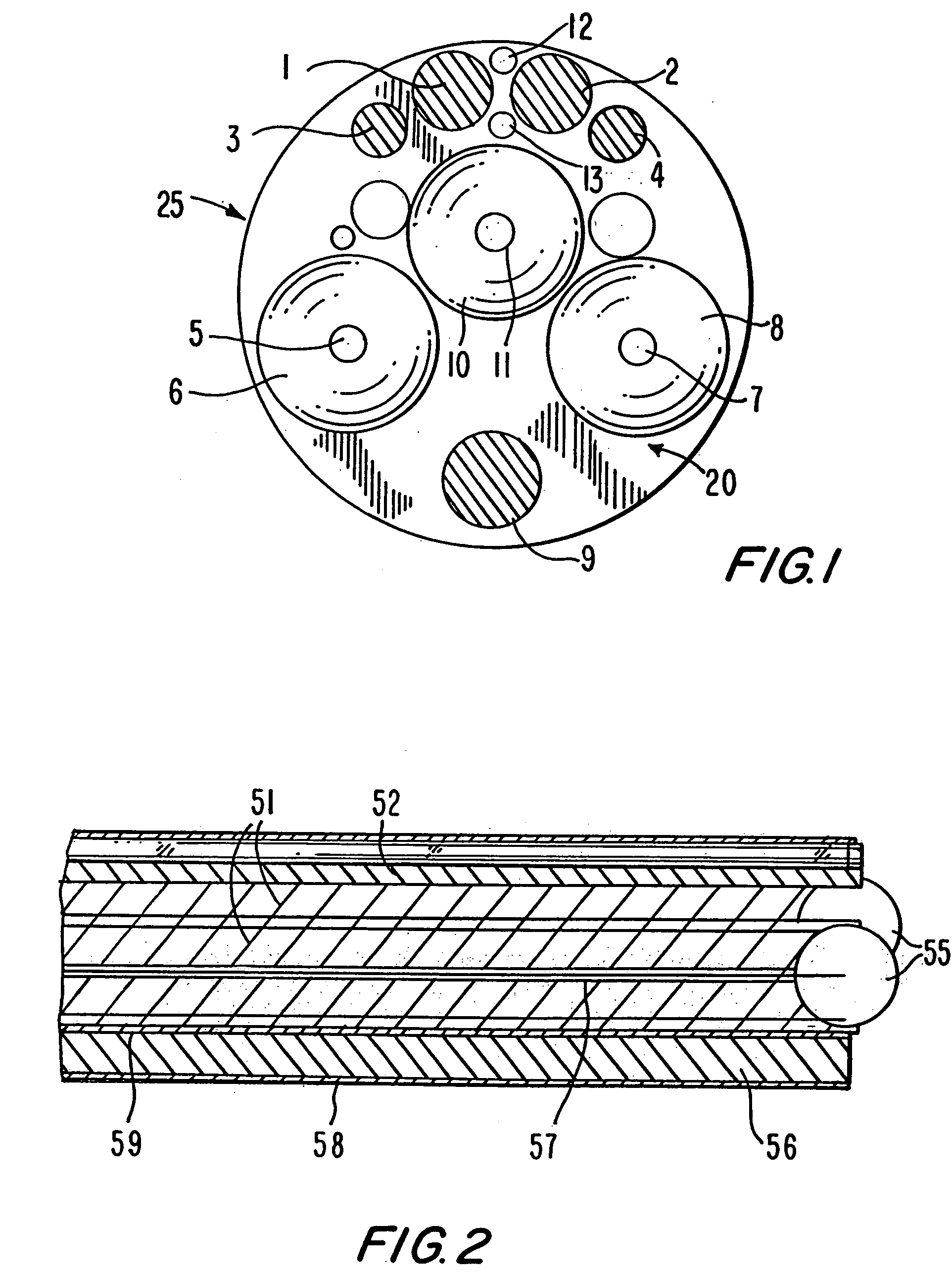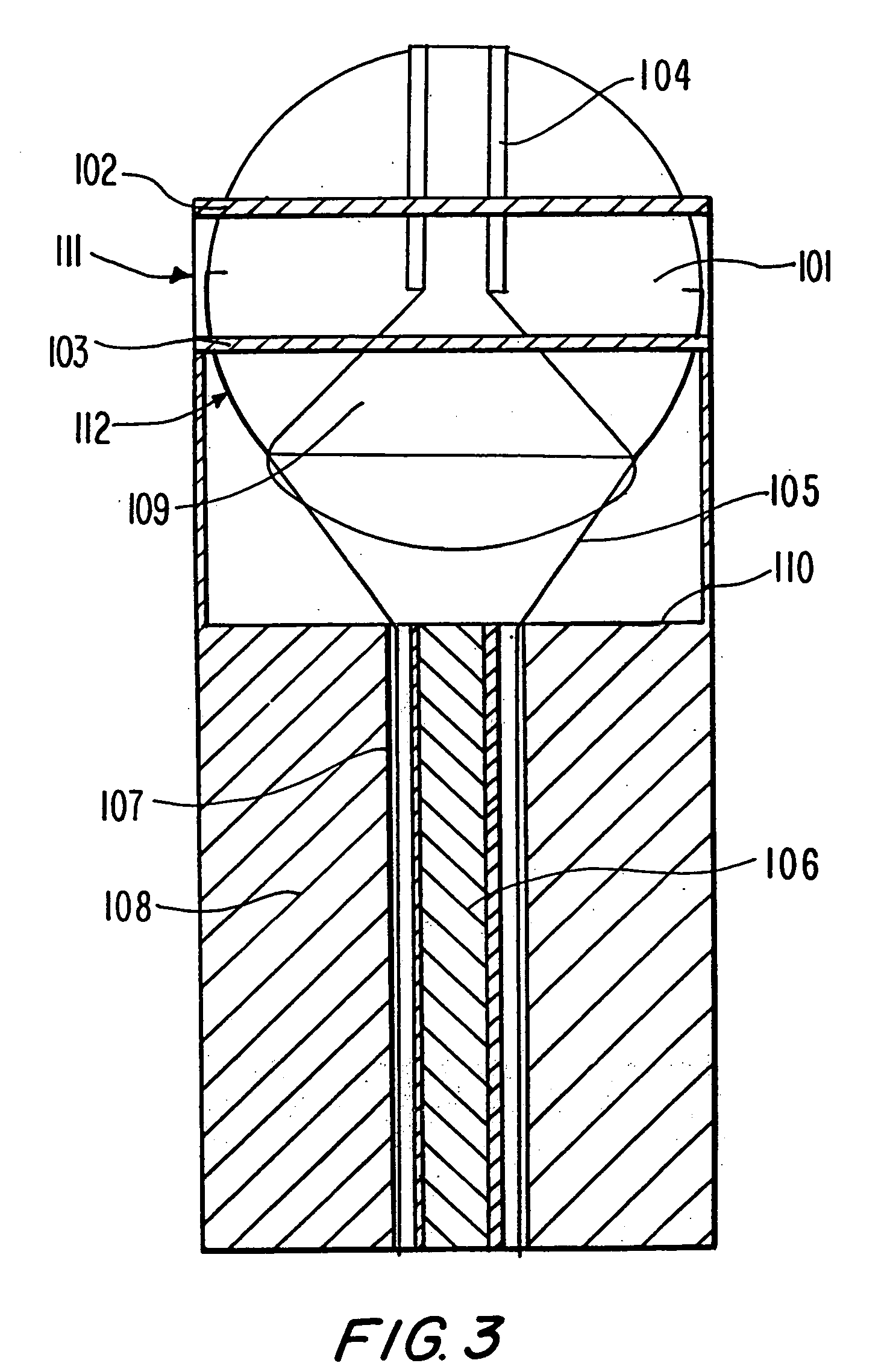Minimally invasive surgery device
a surgery device and minimally invasive technology, applied in the field of endoscopic surgical instruments, can solve the problems of not being completely satisfactory to surgeons, various tools designed, and working in small places that are not visible to the naked eye,
- Summary
- Abstract
- Description
- Claims
- Application Information
AI Technical Summary
Benefits of technology
Problems solved by technology
Method used
Image
Examples
Embodiment Construction
[0040]FIG. 1 shows an end view of the configuration of one of the preferred embodiments. RGB chip camera units 1 and 2 are positioned to the right and left of the center axis of the shaft, and are spaced such that the targeted area will be within the focal distance of the cameras so that a stereoscopic image of the surgical area can be produced. Light is provided by fiber optic sources 3 and 4. Three nodes (6, 8 and 10) are located below the cameras, and each node has a tool port at its center (5, 7 and 11). A balloon port (9) may optionally be used. Sources for H2O and CO2 are shown at 12 and 13. The selection of the number of tools, nodes, ports and other mechanisms may vary depending on the nature of the surgery to be performed.
[0041] A protective plate, 20, is placed over the distal end of the catheter, 25, with openings for all desired ports and nodes. The plate is fastened to the outer surface of the catheter, and provides both support for the distal end of the various ports ...
PUM
 Login to View More
Login to View More Abstract
Description
Claims
Application Information
 Login to View More
Login to View More - R&D
- Intellectual Property
- Life Sciences
- Materials
- Tech Scout
- Unparalleled Data Quality
- Higher Quality Content
- 60% Fewer Hallucinations
Browse by: Latest US Patents, China's latest patents, Technical Efficacy Thesaurus, Application Domain, Technology Topic, Popular Technical Reports.
© 2025 PatSnap. All rights reserved.Legal|Privacy policy|Modern Slavery Act Transparency Statement|Sitemap|About US| Contact US: help@patsnap.com



